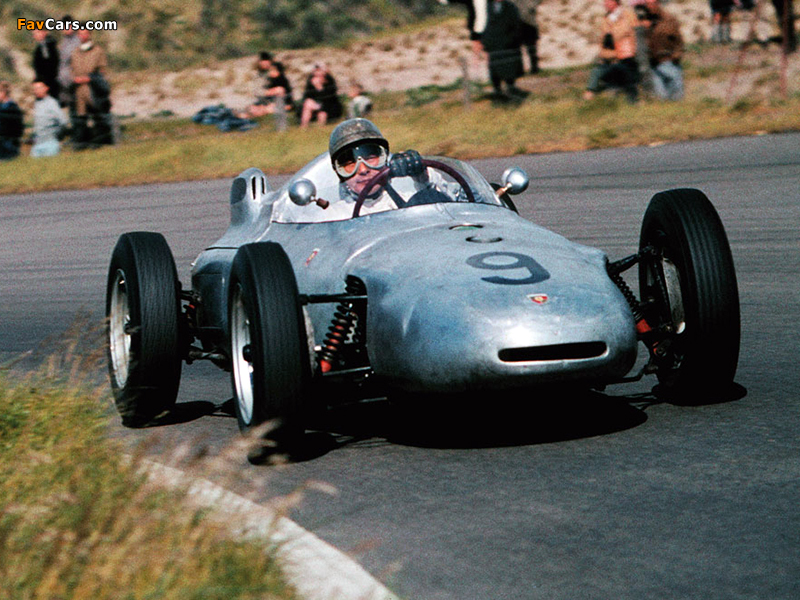The 550 SPYDER
By 1953, Porsche needed to go RACING. It was time to put the brand to the ultimate test. Inspired by the 356, Porsche designed and built the 550 which was a racing sports car produced from 1953 to 1956. In that time only 90 Porsche 550s were produced, but it quickly established dominance in the 1.1- and 1.5- liter classes.
The 550 Spyder would usually finish top 3 in its class. Each Spyder was designed and customized to be raced.
The Type 550/550 A is powered by an all aluminium 1,498 cc (1.5 L; 91.4 cu in) naturally aspirated air-cooled 4 cylinder boxer engine known as the "Fuhrmann Engine" (Type 547).
Its valvetrain uses double overhead camshafts on each cylinder bank, driven by vertical shafts, actuating 2 valves per cylinder. The engine is equipped with twin 2-barrel Solex PJJ downdraft carburetors and dual ignition. In its first version it produced 110 PS (108 hp; 81 kW) at 6200 rpm and a maximum torque of 121 N⋅m (89 lb⋅ft) at 5000 rpm.
The engine of the 550 is mounted in front of the rear axle making it mid-engined. This gives it a more balanced weight distribution, and allows for largely neutral handling. On the other hand, the low mass moment of inertia about the vehicle's vertical axis can lead to a sudden, difficult to control rotation of the car.
Ferdinand Porsche had pioneered this design layout with the Auto Union Grand Prix car of the 1930s.
The first 550 had a fully synchronized 4-speed gearbox. Starting in 1956, a five-speed gearbox was used, but its first gear only had to start and (like the reverse gear) had to be placed over a barrier and not synchronized. Excessive slip to the drive wheels in corners was prevented by a limited slip differential
The first three hand built prototypes came in a coupé with a removable hardtop. The first (550-03) raced as a roadster at the Nurburgring Eifel Race in May 1953 winning its first race. Later that year the 550 took class wins in the 24 Hours of Le Mans and the Carrera Panamericana; the Carrera Panamericana win was commemorated with the Carrera branding for later Porsches with performance options.
From 1953 to 1957, the Porsche works team evolved and raced the 550 with outstanding success and was recognized wherever it appeared. The silver Werke cars were painted with spears of different colors on the rear fenders to aid recognition from the pits.
Hans Herrmann’s particularly famous ‘red-tail’ car No 41 went from victory to victory. For such a limited number of 90 prototype and customer builds, the 550 Spyder was always in a winning position, usually finishing in the top three results in its class.
During its tenure with the works team it was challenged only twice among the smaller cars at the 24 Hours of Le Mans, with a 1.5 liter O.S.C.A. finishing ahead but disqualified in the 1954 race and a 1.1 liter Lotus Eleven trailing the 1.5 liter winning 550 by one lap in the 1957 race.
The 1956 version, the 550A with a lighter and more rigid spaceframe chassis, gave Porsche its first overall win in a major sports car racing event, the 1956 Targa Florio.
During this era Porsche was the first car manufacturer to get race sponsorship, which was through Fletcher Aviation, who Porsche was working with to design a light aircraft engine and later Telefunken and Castrol.



